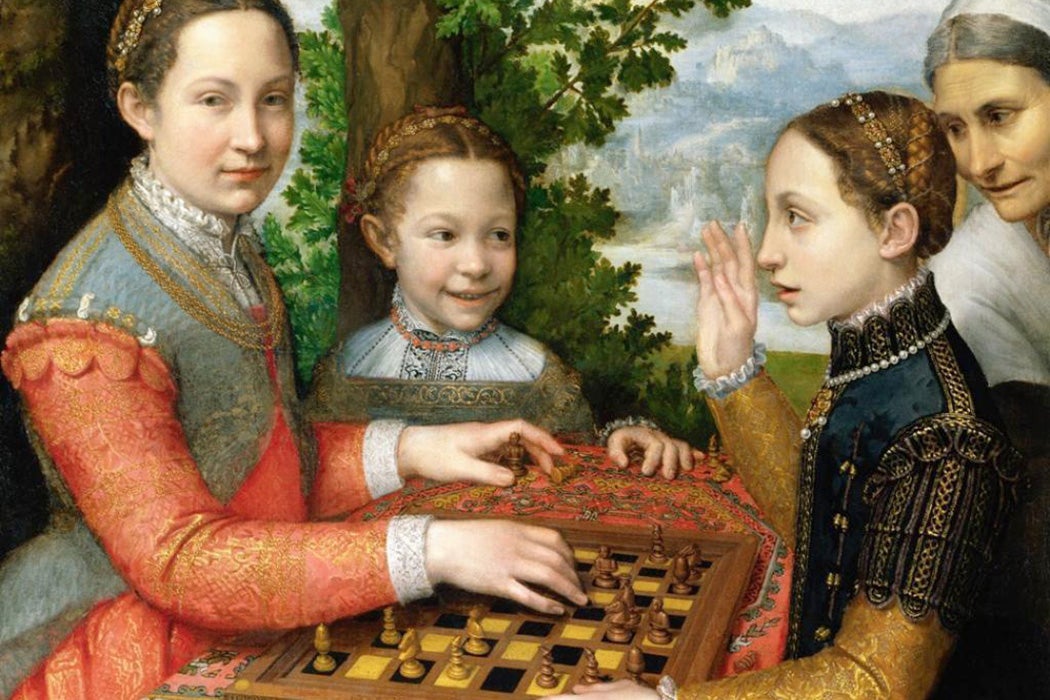In the sixteenth century, Italian noblewoman Catherine de’ Medici became queen consort of France and, later, regent or close adviser for three sons, each of whom became king. This gave her an opportunity for considerable power in political affairs, but she had to be savvy to seize it. And, as historian Susan Broomhall writes, one method she chose was chess.
Broomhall writes that chess was not just a game in early modern Europe: “Its play provided important political training about statecraft, social hierarchies, and warfare.” This didn’t go unnoticed by royal women with political ambition. Anne of Brittany, who was queen of France decades before Catherine, played the game, and so did Catherine’s contemporary Margaret of Austria.
Some early modern writing and art explicitly presented chess as a means for women to prove themselves in political life. The writers of chess manuals targeted high-status women as one of their audiences.
Catherine was good at the game. According to one report, Paolo Boi, known as one of the greatest chess players in the sixteenth century, expressed a desire to play against her. But her aim with chess wasn’t just proving her strategic skill. She promoted the playing of all kinds of games in the royal court. In a letter to her son Charles IX, she wrote, “I heard it said by the king, your grandfather, that two things were needed to live in peace with the French and have them love their king: to keep them happy and to keep them busy at something.”
Broomhall writes that another part of her strategy had to do with the status of women within the court. She had appointed noblewomen to a number of prominent positions, prompting some critics to dismiss the powerful women as the queen’s “stable of whores.” Game playing let women interact with men in a context where their social status outside the game was moot (at least theoretically) and their ability could shine.
“The complex intellectual and orderly strategic movements of chess offered a controlled and rational form of courtly play for women in a mixed-sex environment,” Broomhall writes.
Catherine herself enjoyed a range of leisure activities, which she also used to bond with her father-in-law while he was king. According to one contemporary account, she “always followed him on the hunt, for she was a very good and daring rider,” and he “loved her even more for it, and delighted in giving her the pleasure of hunting.”
Weekly Newsletter
If Catherine was particularly adept at using recreation for political purposes, Broomhall writes, she wasn’t alone in connecting chess with women’s power. Some scholars have suggested that the introduction of the queen as the most powerful piece in the game, replacing the vizier, was a reflection of women’s increasing power in European courts in the medieval period.
Later, some writers expressed concerns about the power of the queen piece, including Italian bishop Marcus Hieronymus Vida, who wrote, “It is cruelty to see blood spilled by one who should carry nothing but gentleness.” Others identified the queen’s strength with the supposed power of women to influence the actions of kings through their love.
Presumably, none of this was quite how Catherine saw it, but, like these writers, she recognized chess as a relevant arena for advancing women’s power.







